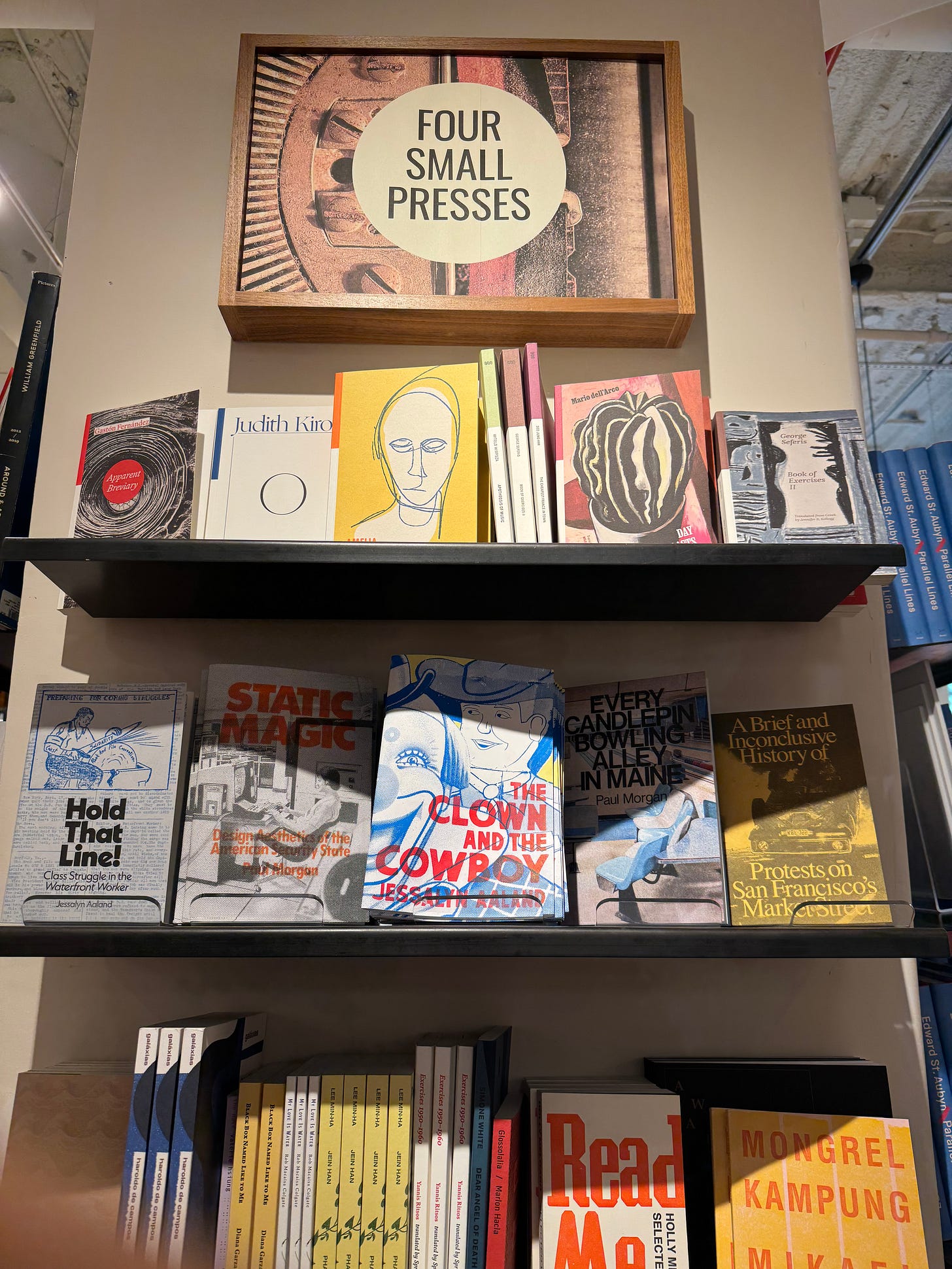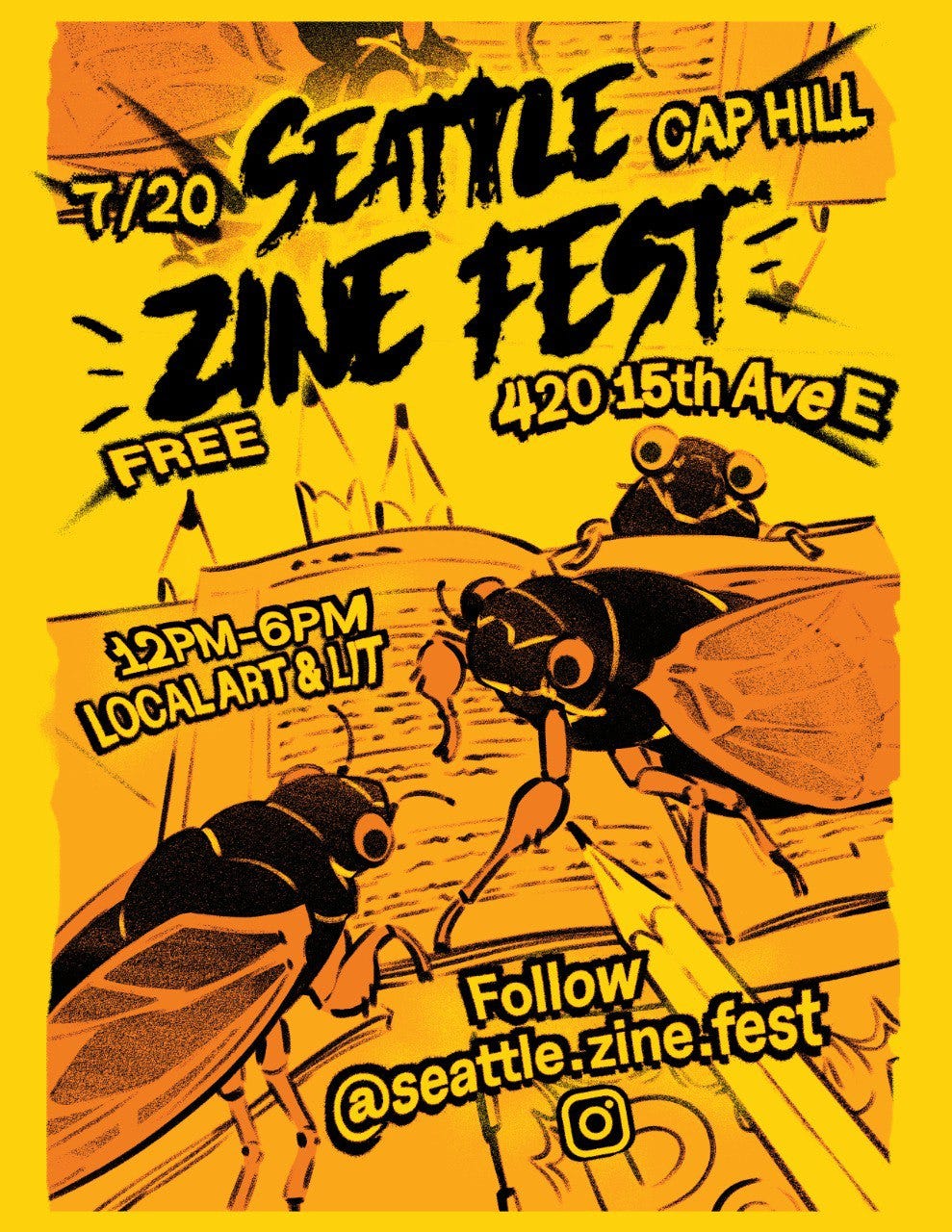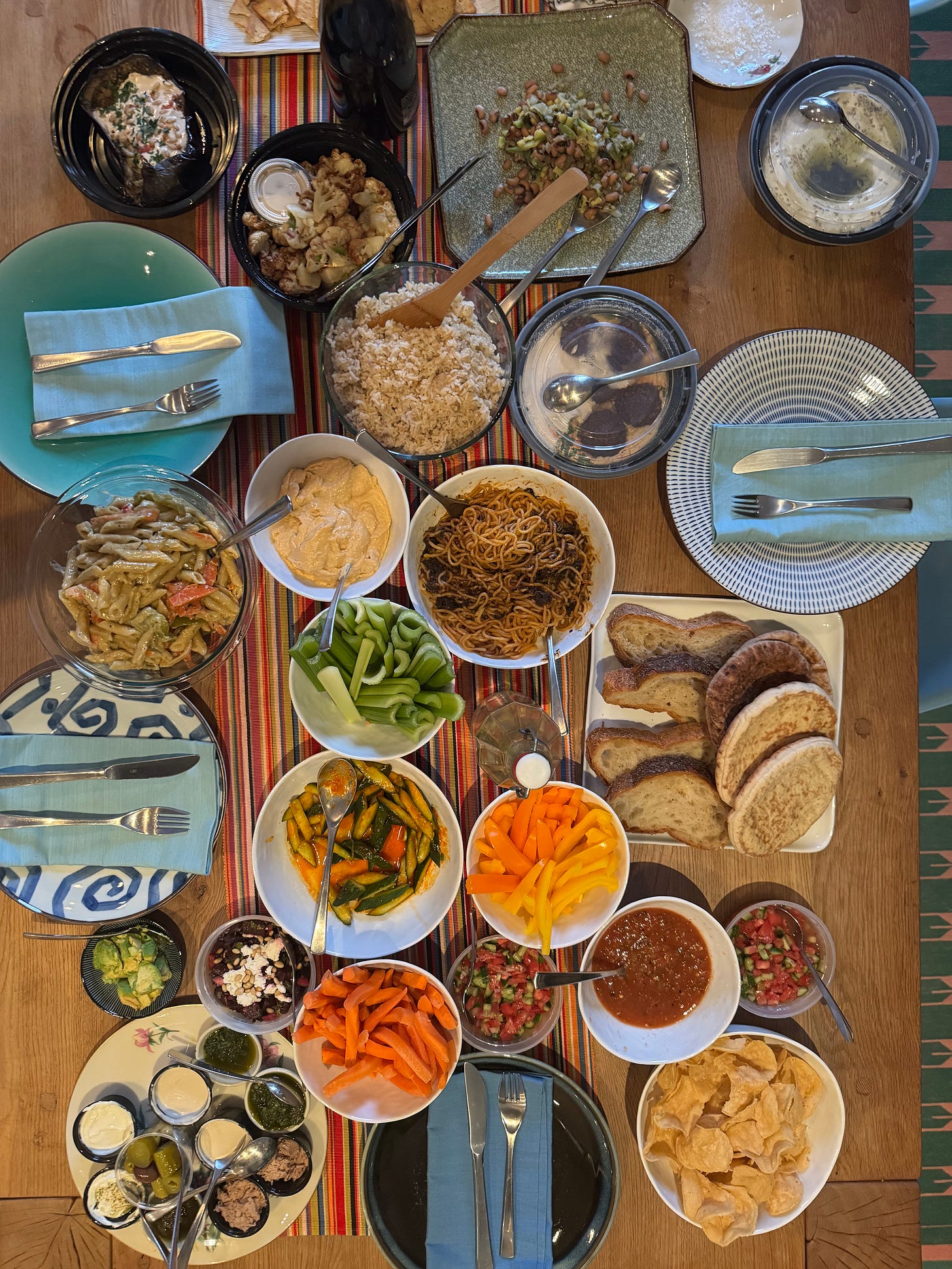zines screens and tangible things
on making zines with friends, an impactful panel at Tribeca, and the importance of IP
Hi friends,
Sorry I missed you last Tuesday, I’m still recovering from my NYC trip! I was out there for the Tribeca Storytelling Summit and catching up with some screenwriting colleagues- is it crazy that I’m still feeling exhausted over a week later?
A couple of weeks ago I mentioned zines, and today I’m diving deeper into why I’ve been so obsessed with them lately. It honestly feels like everything—zines, physical media, creative ownership—culminated in this weird little moment of SYNCHRONICITY while I was in New York. So naturally, I had to write about it. My thoughts are still all over the place and this post feels a little disjointed, but this blog is called HALF BAKED for a reason!
Hopefully this will resonate with some of you. Thanks for reading!
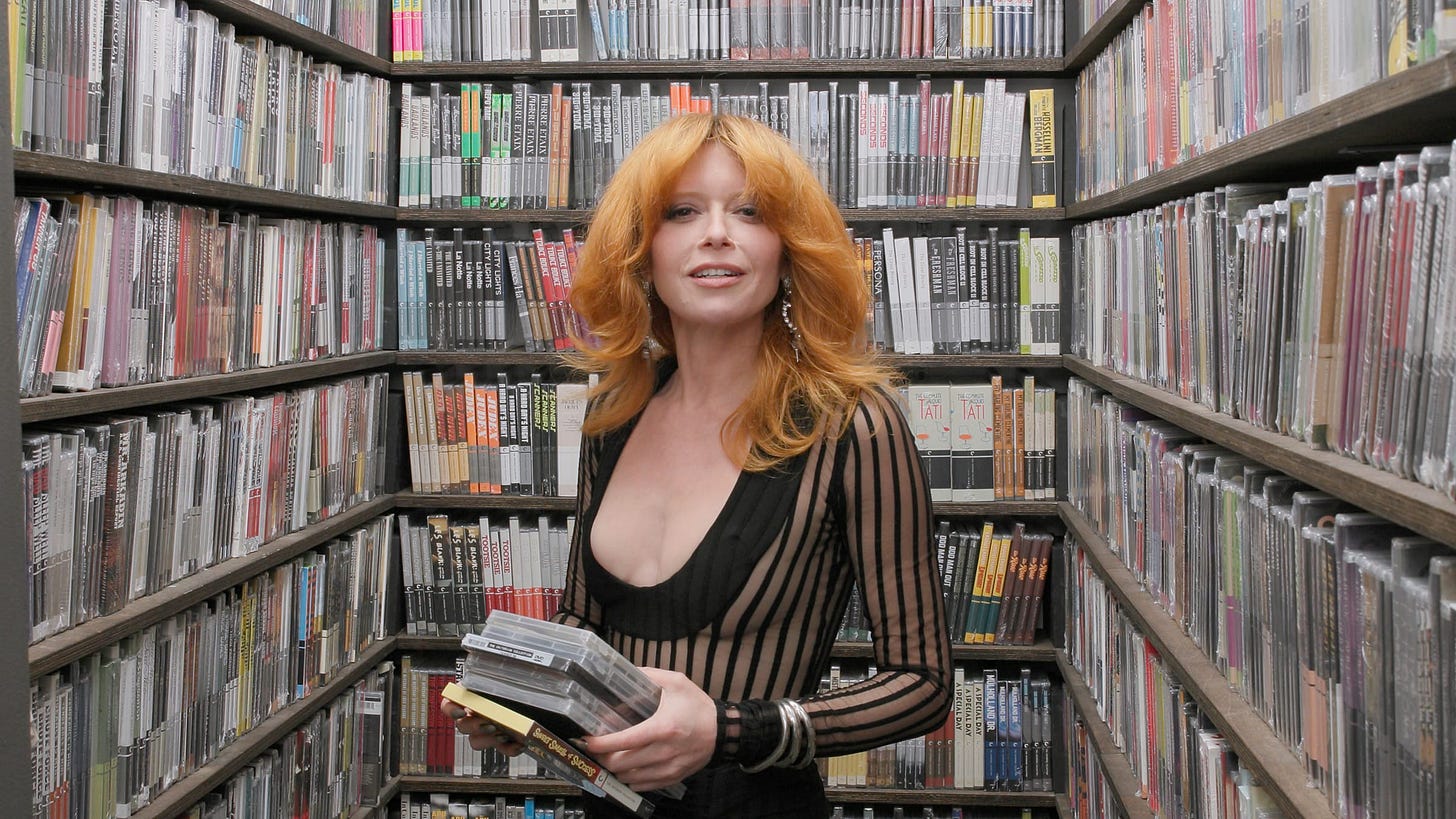
While I was in NYC, I visited one of my dearest friends, Alexandra. She’s my oldest friend (by oldest I mean age-wise). She lives in a tiny shoebox of an apartment, but stepping into her office is like entering a different universe. It’s this tiny little room filled floor to ceiling with books— over three thousand five hundred, from the last time she counted. It’s amazing how much stuff she’s collected over the years— music, art, photographs, trinkets from her travels—every inch brimming with character and life.
What need is there to go out into the city when there’s a world to be explored in a ten-by-six-foot little room?
For the past decade, we’ve all been riding the minimalist wave— capsule wardrobes, de-cluttering, the whole “get rid of everything that doesn’t spark joy”... And yes, overconsumption is ABSOLUTELY a problem. But there’s something really beautiful about curating the things in your life. That’s what Alexandra’s office felt like- like a living archive of a life well-lived.
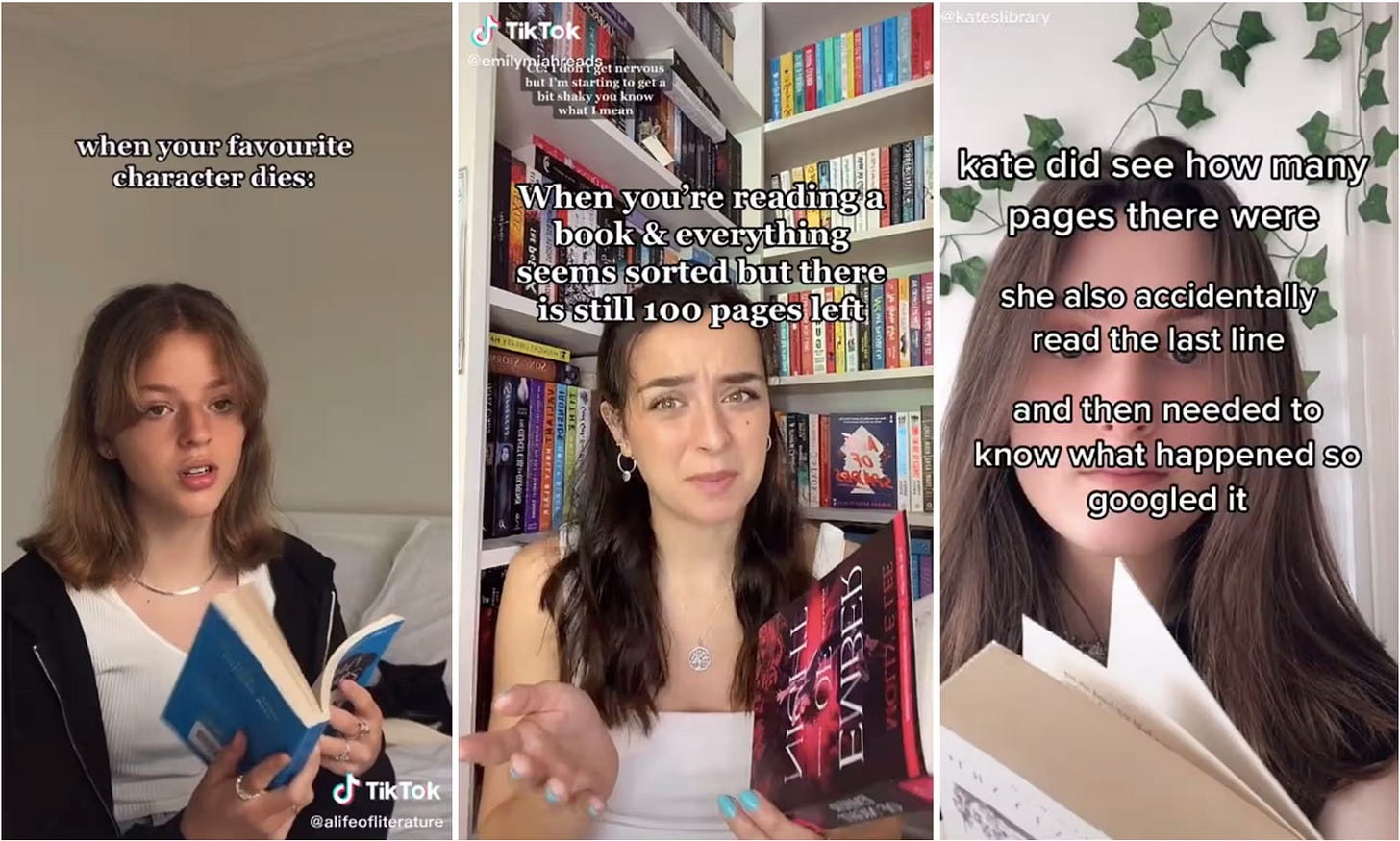
I’ve been seeing a lot of essays encouraging people to replace streaming with physical media: citing everything from it being a way of maintaining ownership, higher quality of material, supporting artists and indie creators. (Totally shameless plug, but I happen to have DVDs of my documentary A Brief History of Time Travel for sale on my website!)
This is just my theory, but I think the trend really picked up with #BookTok and those cozy, perfectly arranged bookshelves behind people- more specifically, teen girls- reviewing novels and romantasy books during the pandemic. And now, Barnes and Noble is experiencing a renaissance— over 65 stores are opening in 2025! (This makes me really giddy- I remember hanging out at Barnes and Noble with my friends when I was a teen girl, pouring over some YA novels and admiring overpriced notebooks).
The music industry has always understood the power of physical media: vinyl records that double as artwork to hang in your home, cassettes as collectibles… (when I went to see Rahill a few weeks ago, all of her records were sold out! ) While researching the K-pop industry a few weeks ago, I came across the practice of selling physical CDs for a chance to video chat with your idol— like a modern-day golden ticket to the Willy Wonka factory.
And then there’s film. You can see it in the cult following around the Criterion Closet. Video rental stores are reopening in LA and NYC (although I would like to say that nothing can compare to the iconic Scarecrow Video in Seattle!) Distributors like Kino Lorber, Oscilloscope, Criterion, NEON, and of course A24 are tapping into the collector culture that streaming can’t quite replicate with limited edition releases, beautiful packaging, behind the scenes booklets, etc.
But while music makes physical ownership feel accessible, I think film still has a bit of a barrier to entry. Unless you’re a cinephile, I don’t know that many people who casually buy exclusive Blue-rays.
But I think I have a solution to that.
beyond screenwriting
One of the panels that stuck with me most at the Tribeca Storytelling Summit was titled “Where Does My Story Fit?” It featured Leslye Headland, showrunner of Russian Doll and, most recently The Acolyte, and Emmy Award–winning documentarian Michèle Stephenson.
Both women are moving beyond traditional film constraints and focusing on telling stories in formats that fit the ideas they’re trying to explore. Michèle recently created a VR piece that was premiering at Tribeca. Leslye is returning to her roots in playwriting:
“What worked for me was going back to my first love—and the medium that was accessible to me—which was theater.”
They both emphasized their decision wasn’t about chasing trends, it was about finding the medium that’s accessible, sustainable, and aligned with your creative instincts.
Some of my favorite takeaways:
“I am my first audience.”
“I will build it, and they will come. I will tell a story I’m interested in, with actors I’m interested in.”
But the part that resonated with me the most was what Leslye said about the future of distribution:
“If you wanna know what’s happening in Hollywood distribution, just look at porn. What do we have now? OnlyFans. Look at YouTube and Nebula. These content creators make six figures a year. It’s a completely different world of self-distribution, where we don’t let the commercial space dictate us.”
I think we all know how quickly the Hollywood landscape is shifting, so it wasn’t really a surprise to hear this coming from Leslye. A recent Hollywood Reporter article dives into how creators ate now the ones building their own production companies, fanbases, even mini-studio ecosystems as Hollywood cuts back.
That panel didn’t just make me rethink where my stories might live. It brought up a bigger, more complicated question I’ve been sitting with for a while:
Who owns the stories we tell?
creative ownership
As a screenwriter, I think about intellectual property all the time. In music or publishing, artists often retain ownership. If I write a novel, I own the rights. But if I write a script? The moment it sells, it belongs to someone else.
At Tribeca, another filmmaker recommended "Time Risk," a blog post by screenwriter Terry Rossio (Shrek, Aladdin, Pirates of the Caribbean). If you’re a screenwriter, I HIGHLY recommend reading this! It’s a super long post— it took me like a couple of hours to read the whole thing— but he lays out the entire landscape of the industry so clearly and where the screenwriter ends up (most of the time with the short end of the stick!).
Rossio’s core argument is simple: if you’re spending months, or years, on a story, maximize the value of that time by creating the IP in a format you can own.
“There is no sense to ever writing any feature screenplay without writing the novel version concurrently, or initially.”
That hit me.
Because in a landscape obsessed with brands and cinematic universes, the only real power you have is in owning your own voice.
Rossio even points to J.K. Rowling as an example. If she had written Harry Potter as a screenplay first, she likely would’ve signed away her rights for a fraction of what the series eventually earned. But by writing the novels first, she was able to maintain control, secure her position as the creative force behind the franchise, and most importantly profit from it.
More recently, director Ryan Coogler made headlines for negotiating the rights to Sinners, his upcoming project, which will revert back to him after 25 years—something virtually unheard of. Is this a one-off? Or the start of something new?
Maybe it depends on how much leverage you have going in.
But for most screenwriters, the path to owning your IP only opens if you start in another field, like plays, novels, graphic novels, short stories, etc.
And that’s tough. Because there is absolutely no guarantee that the screenplays I’m writing will ever get made. Film is a gamble. I’ve read incredible scripts that deserve to exist in the world and still never made it out of development limbo.
So lately, I’ve been thinking: What’s something I can build now?
Yes, writing a novel would be amazing. But let’s be real— between finishing my screenplays and keeping this blog alive, I’m barely keeping up as is!
And that’s where zines come in.
zines!
By definition, a zine is a self-published, small-circulation publication often free or low-cost and made for a niche audience. It can be a magazine, a pamphlet, a Xeroxed comic, a newsletter, or a glossy booklet full of photos or artwork, poems, honestly anything!
And now? Zines are making a comeback. Wired just published a whole piece about it: "Zines Are Making a Comeback Because Social Media Sucks."
When I was in NYC, I noticed how even the bookstores were getting in on the trend. At McNally Jackson, my favorite, obnoxiously fancy bookstore, was selling these beautiful esoteric zines.
I think it’s been a perfect storm. Zines have always been political- used as a way to organize and amplify marginalized voices— there’s also a very strong tie between zines and the punk and riot grrrl scenes in the 90s.

And right now, with the growing backlash against Big Tech, the burnout from social media, and a hunger for physical connection, zines feel very relevant. People are craving more tactile, dare I say more analog ways to engage with art and ideas, and I think zines offer an affordable, low stakes way to connect.
I got into zines earlier this year when I stumbled across an open call for the Seattle Zine Fest. (Seattle has a deep and beautiful relationship with zines, since the city has long been a hub for underground publishing and DIY art. The Seattle Public Library even has a dedicated zine collection which I highly recommend checking out!)
I applied to the fest on a whim—and ended up getting a full table!
So over the past few weeks I’ve been working on a couple of companion zines for my screenplays, some of which I’ll be sharing here in the future. Sure, part of it is about expanding the IP of the worlds I’m building, but honestly, it’s just been a really fun and freeing way to creatively explore the stories and characters I’ve created.
Some zines I’ve been making:
a magical travel guide to Seattle (a companion zine to DYLAN WE NEED TO TALK)
a business plan for Future Genex, a body brokering company (from my Pilot BODY BROKERS)
a collection of my substack articles
I invited a few friends to join, and it’s turned into this really joyful way to collaborate, catch up, and just be creative!
So, if you’re around Sunday July 20th, we’ll be at the Seattle Zine Fest in Capitol Hill from 12pm-6pm. Hope to see some of you there!
what i’m consuming 🍰
While I was in NYC, a friend and fellow screenwriter hosted the most lovely dinner party and I don’t think I’ve felt so mentally and emotionally satiated in a long time.
The food was great, but the company was even better!
At the “Where Does Your Story Fit?” panel with Leslye and Michèle, they talked about how essential it is to find the right collaborators, the people who will walk alongside you, because the journey to making a film is long, often difficult, and can take years.
I’m really grateful to have friends who are growing alongside me, figuring it out together as we go <3.
who i am
Hi, I’m Gisella! I’m a repped screenwriter based in Seattle. I directed a feature-length documentary and most recently, my pilot Body Brokers was on the 2024 Blacklist Latine List. Follow me on my journey to get my first screenplay green lit 💚






